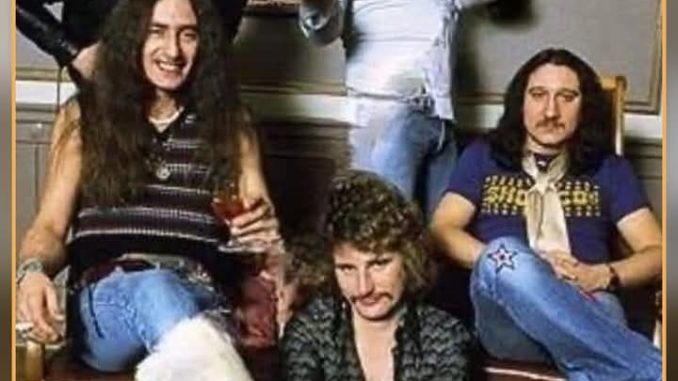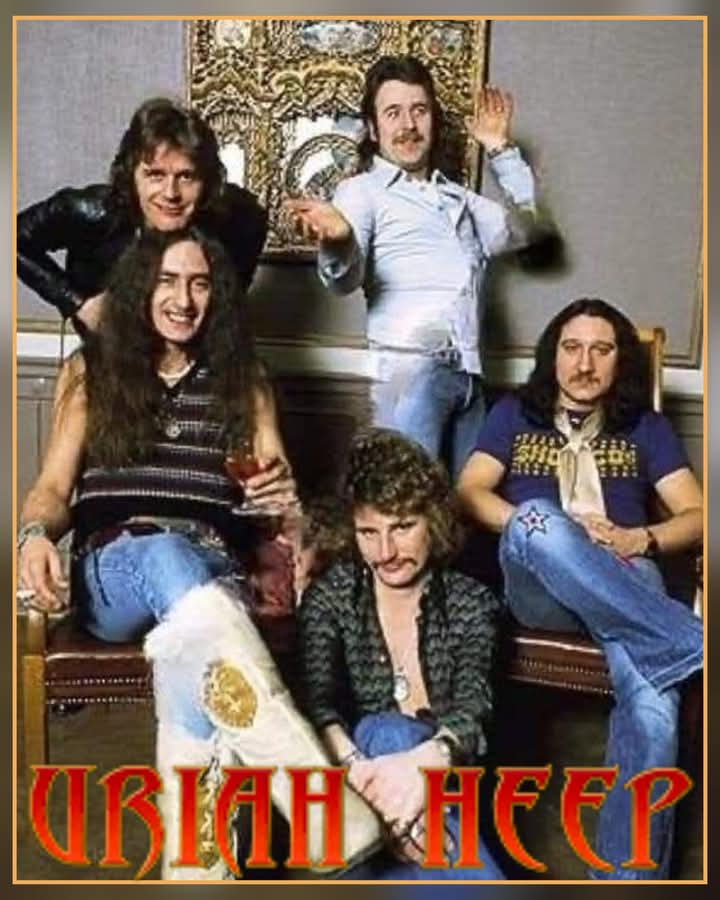
In 1976, Uriah Heep stood at a crossroads, a band forged in the fires of early ’70s hard rock, still radiating the power, passion, and musical daring that made them one of Britain’s most distinctive rock exports. That year, the group’s lineup, John Wetton, Ken Hensley, David Byron, Lee Kerslake, and Mick Box, represented a unique convergence of talent and tension, brilliance and burnout. Their appearance in Denmark during that era remains one of the most fascinating snapshots of Uriah Heep’s history, a portrait of a band both triumphant and transitional.

The 1976 Lineup: A Fusion Of Giants
The band that took the stage in Denmark that year was nothing short of extraordinary.
- John Wetton, fresh from King Crimson, brought a deep, melodic sensibility on bass and vocals, grounding the group with both precision and power.
- Ken Hensley, the band’s chief songwriter and multi-instrumentalist, was the creative heart of Uriah Heep, his Hammond organ and lyrical depth defining their sound.
- David Byron, the band’s charismatic frontman, embodied theatrical rock at its finest, a singer of operatic range and emotional electricity.
- Lee Kerslake, steady and soulful behind the drum kit, provided the rhythmic engine that kept Heep driving forward.
- Mick Box, the ever-grinning guitarist and founding member, delivered the band’s signature riffs with flair and warmth, the anchor through every era.
Together, this lineup blended heavy rock, soaring harmonies, and progressive complexity, the elements that made Uriah Heep both a critics’ conundrum and a fans’ favorite.
The Denmark Era: Between Turmoil And Triumph
By 1976, Uriah Heep had already achieved global success with albums like Demons and Wizards (1972), The Magician’s Birthday (1972), and Sweet Freedom (1973). Yet, the mid-’70s brought change. Internal tensions, creative differences, and the pressures of relentless touring weighed heavily on the band.
Their Danish appearance came during the High and Mighty tour, an album that, while not a commercial peak, showcased a band pushing artistic boundaries. Onstage in Denmark, the chemistry between Byron and Wetton was palpable, two strong personalities interpreting Hensley’s songs with power and pathos. Tracks like “One Way or Another”, “Midnight”, and “Gypsy” filled the halls with swirling organ, layered harmonies, and a sense of grandeur that only Heep could deliver.
A Moment Before The Change
What makes this 1976 moment so iconic is its timing. It was one of the final tours featuring David Byron, whose departure, and subsequent passing just a few years later, marked the end of Uriah Heep’s original era. Similarly, John Wetton’s brief tenure would soon lead him to new ventures, including Asia, where he would achieve massive success.
In hindsight, the Denmark lineup feels like a supergroup, a convergence of musicians who each carried their own legend, briefly united under the Uriah Heep banner.
Legacy Of The 1976 Lineup
While some fans regard this as a turbulent chapter, many see it as one of the band’s most fascinating. The combination of Wetton’s technical skill, Hensley’s songwriting, and Byron’s unmatched stage charisma created performances that were emotionally charged and musically intricate.
Photographs and live recordings from Denmark in 1976 capture not just a band in flux, but a band at the height of its creative depth, balancing hard rock muscle with progressive elegance.
The Magic Still Lives
Today, with Mick Box as the band’s sole remaining founding member, Uriah Heep continues to perform and record, honoring more than five decades of rock history. But for longtime fans, the Denmark 1976 lineup remains a golden memory, a brief but brilliant chapter when five musical forces collided to create something timeless.
John Wetton, Ken Hensley, David Byron, Lee Kerslake, and Mick Box, five names forever etched into the legacy of British rock. Their time in Denmark stands as a testament to Uriah Heep’s enduring spirit: dramatic, soulful, and unmistakably their own.
Leave a Reply